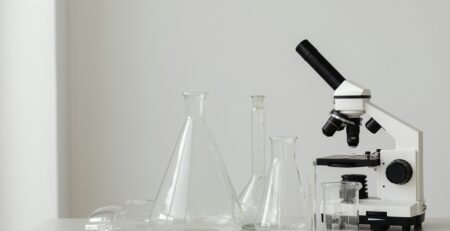4
Sep
Density Measurement Tools: Pycnometers vs Hydrometers in the Lab
Measuring liquid density is an important part of analytical chemistry, quality control, and education. Two common tools used are pycnometers and hydrometers. While both determine density, they differ in accuracy, applications, and handling. For Australian schools, universities, and industry labs, choosing the right tool depends on whether precision or speed is the priority.
Pycnometers: Precision Through Calibration
A pycnometer is a small calibrated flask, usually made from BORO 3.3 borosilicate glass, fitted with a tight stopper.
- Provides high accuracy and reproducibility in density measurement.
- Works by weighing the flask when empty, filled with liquid, and sometimes with water for calibration.
- Complies with ISO 3507 and ASTM D854 standards.
- Commonly used in analytical chemistry, pharmaceuticals, and petrochemicals.
Pycnometers are ideal where precision and traceability are essential.
Hydrometers: Speed and Simplicity
A hydrometer is a calibrated glass float that sinks to a level corresponding to the liquid’s density.
- Quick and simple method for density measurement.
- Requires larger liquid volumes compared to pycnometers.
- Complies with ASTM E100 standards.
- Widely used in education, food and beverage testing, and rapid quality checks.
Hydrometers provide faster results but with lower accuracy compared to pycnometers.
Comparison Table: Pycnometers vs Hydrometers
| Feature | Pycnometer | Hydrometer |
|---|---|---|
| Accuracy | Very high, reproducible measurements | Moderate, depends on float calibration |
| Sample Volume | Small (10–100 mL typical) | Larger volumes required |
| Standards | ISO 3507, ASTM D854 | ASTM E100 |
| Best Applications | Analytical labs, pharmaceuticals, QC labs | Teaching labs, beverages, quick checks |
| Material | BORO 3.3 Borosilicate Glass | Glass (sometimes plastic casing) |
FAQs
Q1: Which is better for teaching labs?
Hydrometers are easier to use and demonstrate density concepts, while pycnometers are better for advanced teaching in analytical chemistry.
Q2: Can pycnometers be used for volatile liquids?
Yes, but special stoppers may be needed to prevent evaporation during measurement.
Q3: Are hydrometers accurate enough for industry labs?
They are useful for quick checks but are not precise enough for regulated or accredited laboratory work.
Q4: Why is borosilicate glass preferred for pycnometers?
BORO 3.3 ensures stability under repeated heating, cleaning, and weighing, meeting ISO 3585 standards.
References
- ISO 3507: Laboratory Glassware — Pycnometers.
- ASTM D854: Standard Test Method for Specific Gravity of Liquids Using Pycnometers.
- ASTM E100: Standard Specification for ASTM Hydrometers.
- ISO 3585: Borosilicate Glass 3.3 — Material Properties.
- NIST Chemistry WebBook, National Institute of Standards and Technology.

